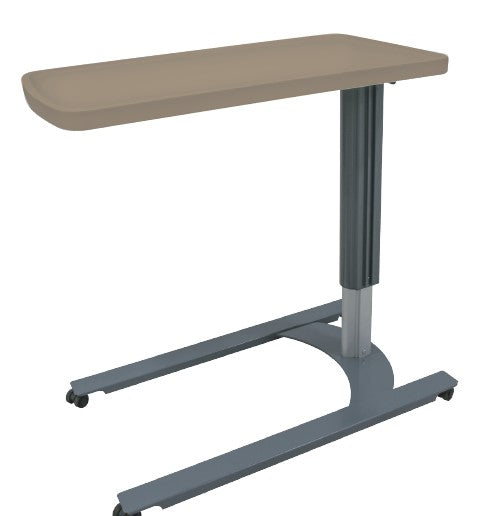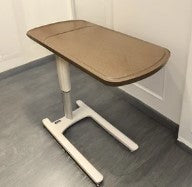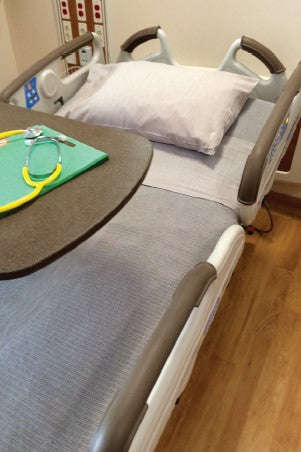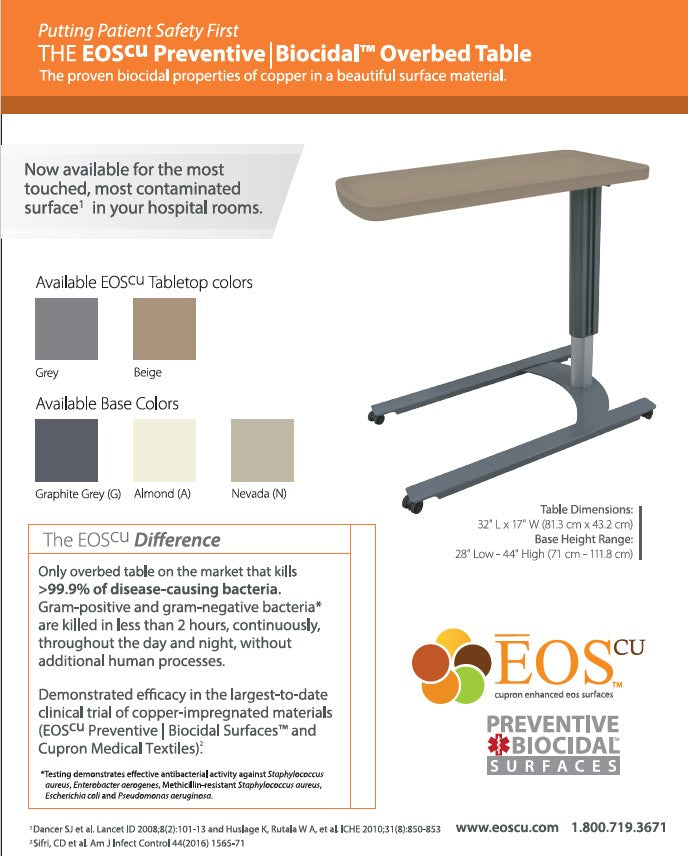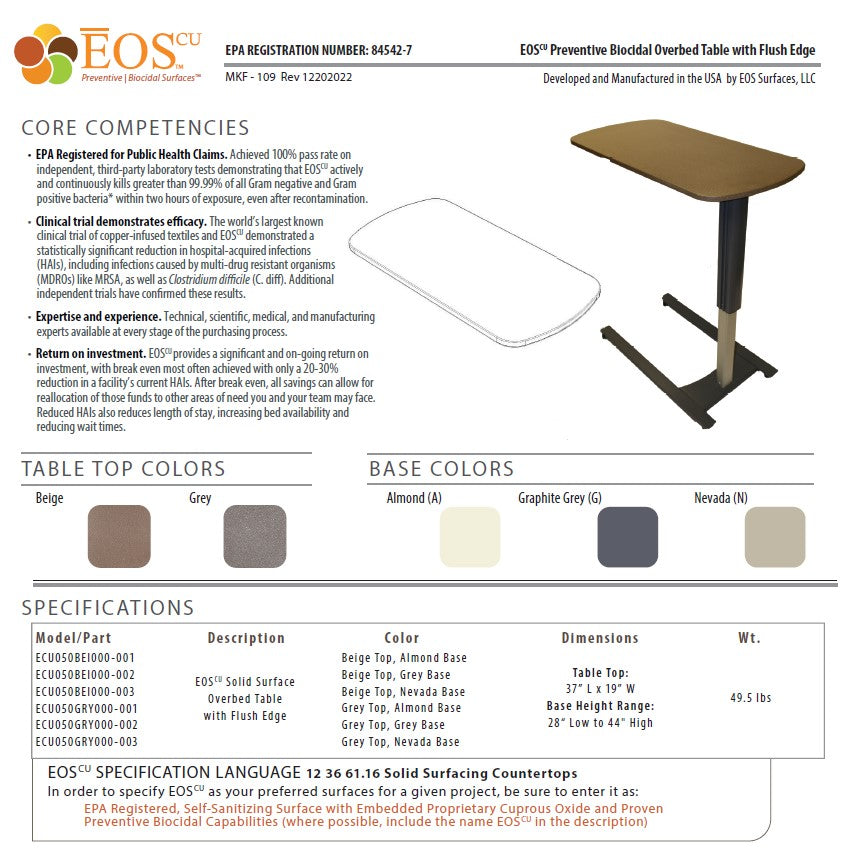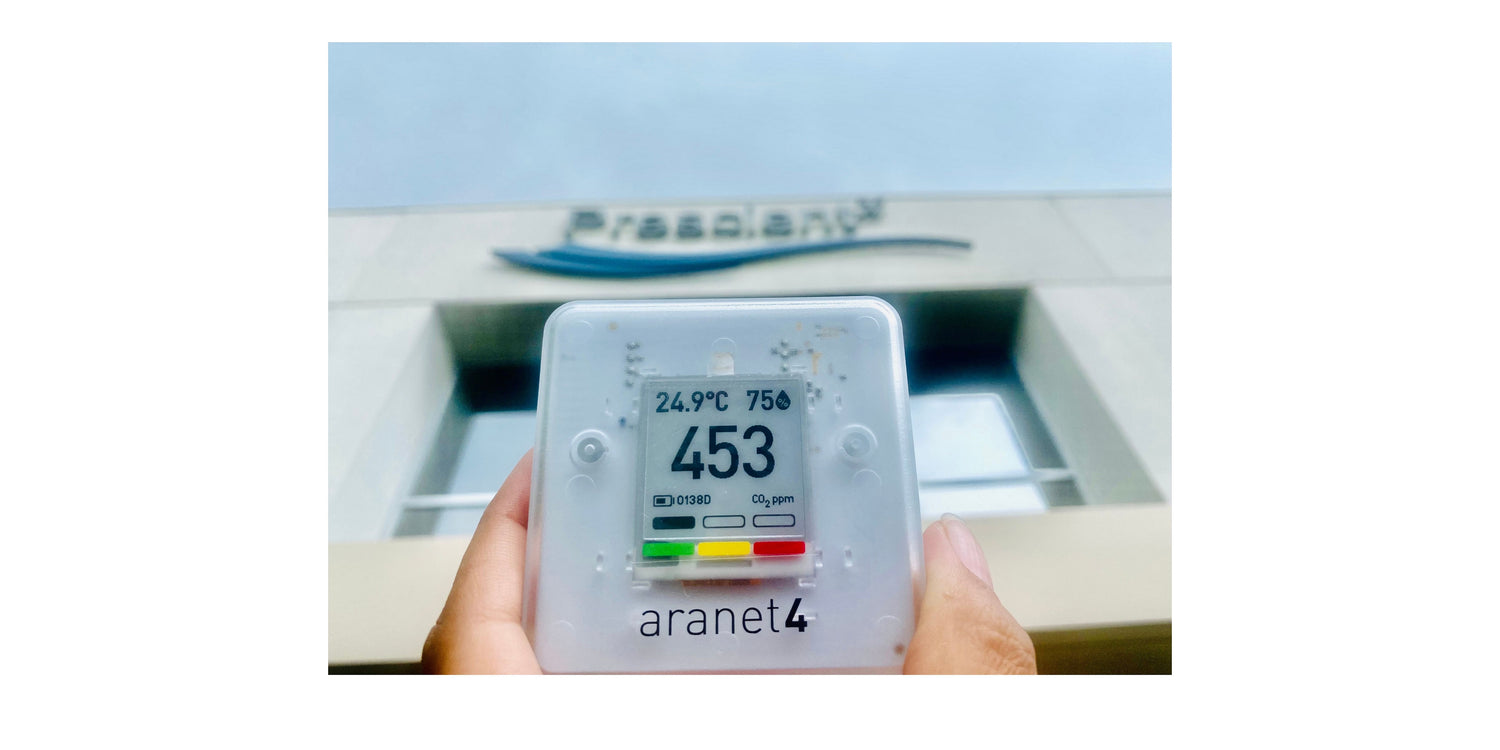EOS
Over the Bed Table
Over the Bed Table
Couldn't load pickup availability
EOSCU overbed tables provide a safer option for one of the hardest working pieces of patient furniture. This table can hold dinner, files, medications, and crossword puzzles, but it won't hold bacteria.
EOSCU actively and continuously kills >99.9% of harmful bacteria within two hours of exposure, even after recontamination.
The proprietary copper-oxide technology is infused throughout the material, ensuring that any exposed surface is actively killing bacteria
Dimensions:
Table top:
37"L x 19"W
Base Height Range:
28" Low to 44" High
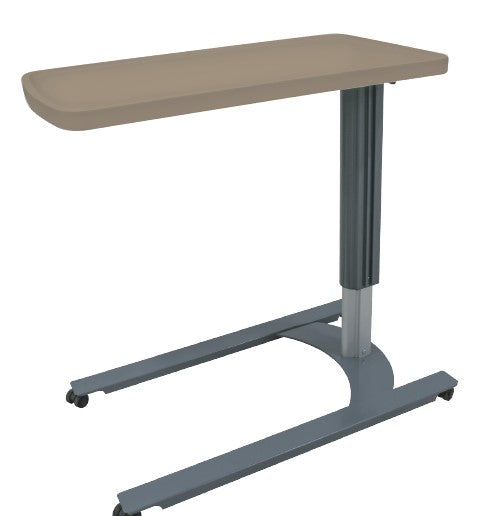
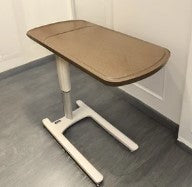

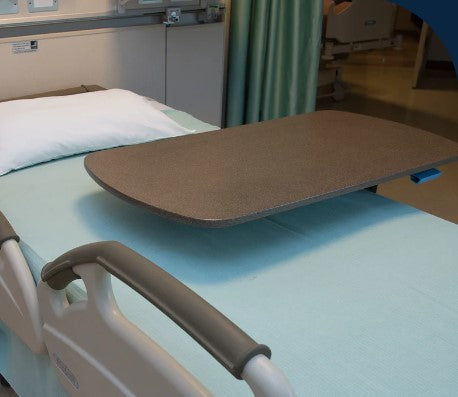
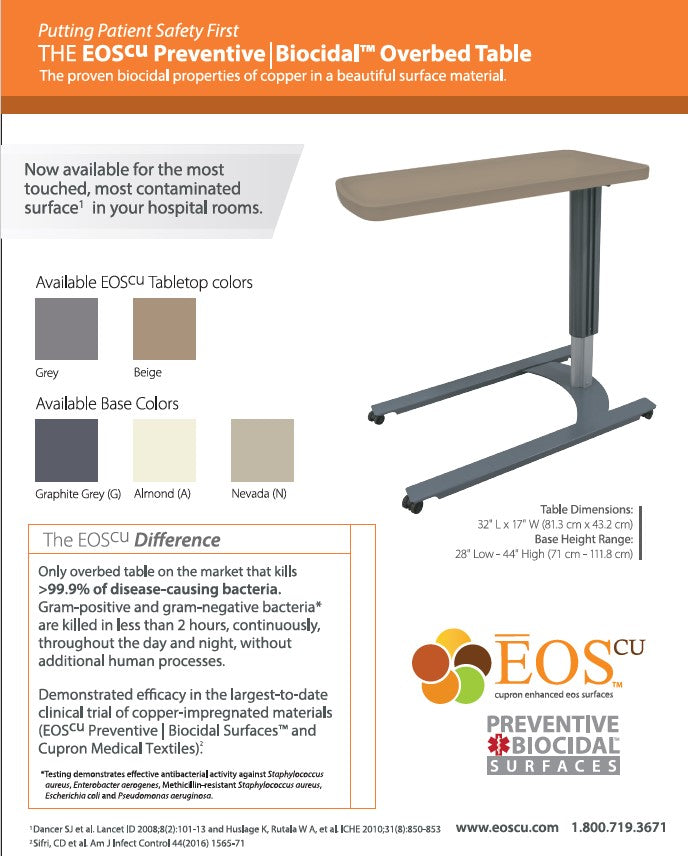
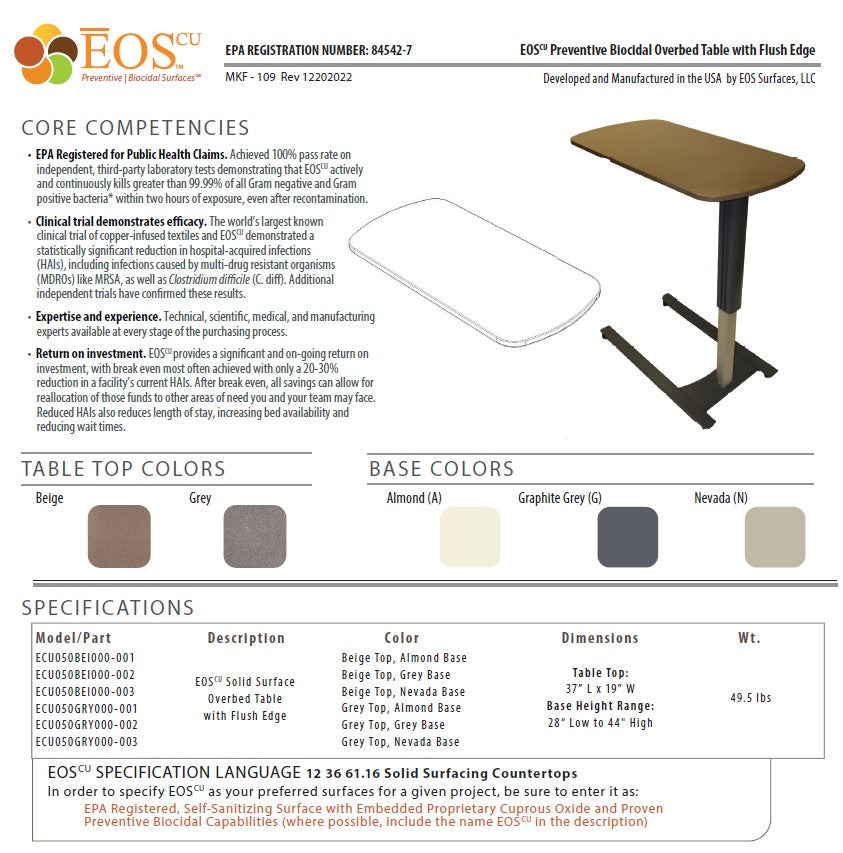
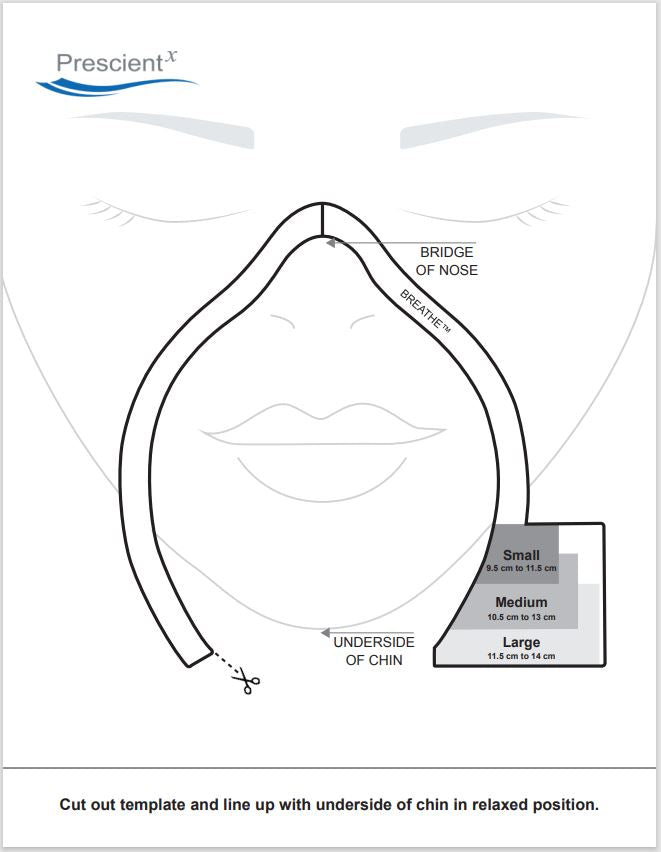
Will [breathe]™ fit my face?
[breathe]™ is available in Small, Medium and Large sizes, designed to fit all CSA & NIOSH adult face sizes.
Download Sizing Template-
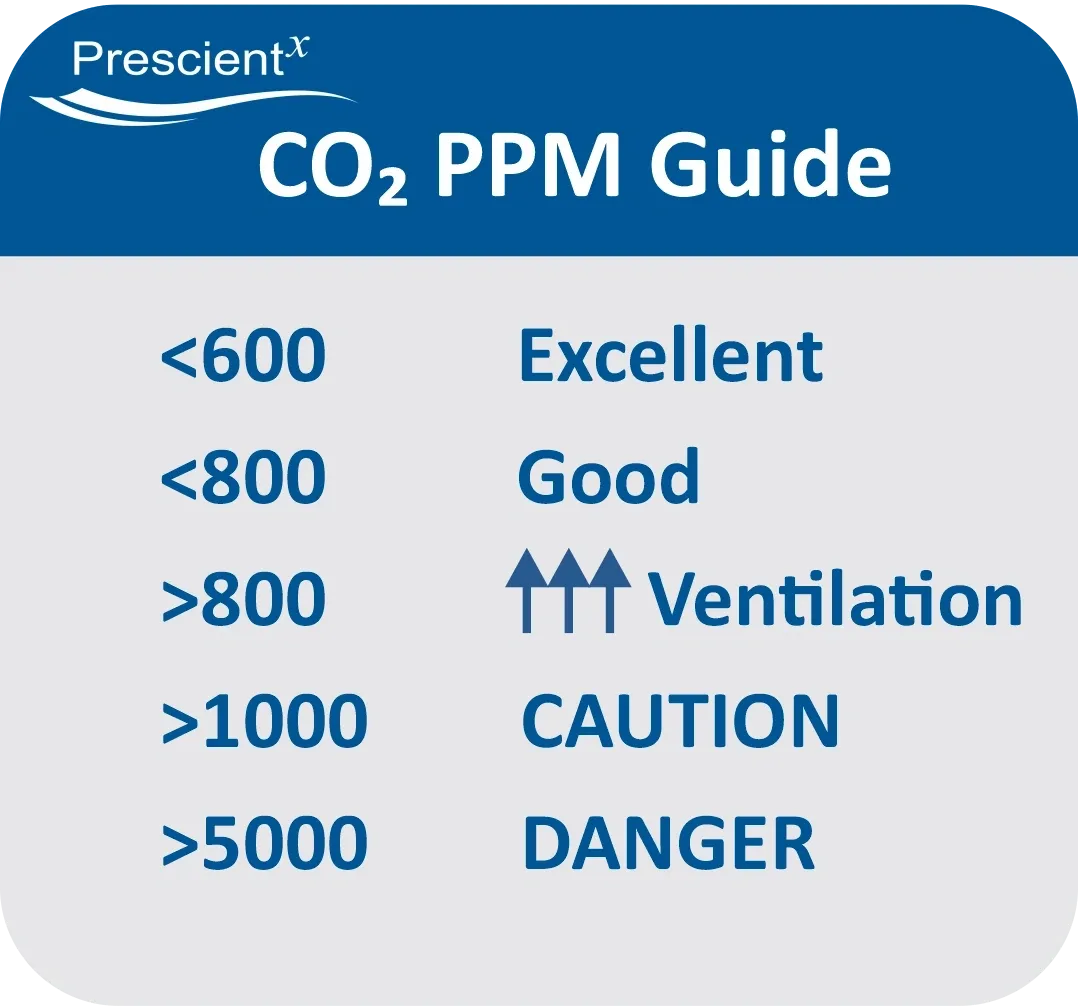
Aranet4 takes CO2 monitoring to the next level of portability, usability, and utility.
Understand your risk. Take it everywhere: home, school, gym, office, transit, air travel.
The lower the CO2, the less risk of exposure to rebreathed air.
Aranet4 shows CO₂ measurements directly on its e-ink screen with a corresponding color indicator and configurable sound alarms.
Aranet4 uses the most precise Nondispersive infrared (NDIR) sensor technology for accurate CO₂ measurements. It has a super-efficient e-ink display that extends its battery life up to 2 years (2xAA).
Aranet4 device is Bluetooth compatible, using your iOS or Android device.
-
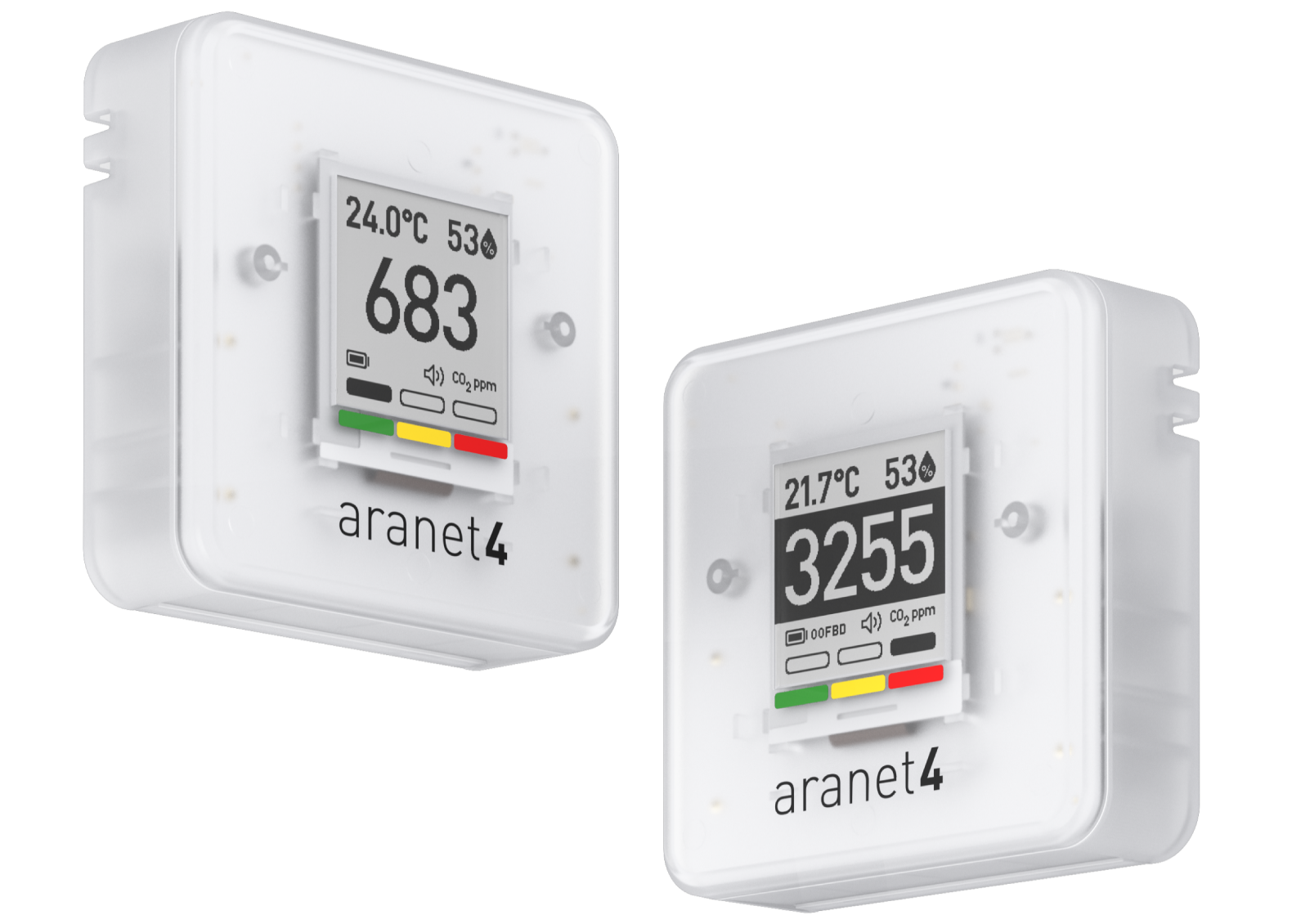
Outdoor air is ~420 ppm CO2. Unoccupied indoor spaces may be higher due to combustion sources such as gas appliances, candles and fireplaces.
For occupied spaces, each increase of 400ppm above unoccupied = 1% rebreathed air.
Cognitive function impairment increases above 1000ppm and is pronounced over 1400 ppm.1
1 Allen, Joseph G., Piers MacNaughton, Usha Satish, Suresh Santanam, Jose Vallarino, and John D. Spengler. 2015. “Associations of Cognitive Function Scores with Carbon Dioxide, Ventilation, and Volatile Organic Compound Exposures in Office Workers: A Controlled Exposure Study of Green and Conventional Office Environments.” Environmental Health Perspectives 124 (6): 805-812. doi:10.1289/ehp.1510037.

